Busing for Equality
By Matthew Kim

Richard A. Pride
Richard A. Pride wrote other books, one called The Confession of Dorothy Danner: Telling a Life, the other, The Political Use of Racial Narratives, also about the fight to desegregate schools, but this one centers on the town of Mobile, Alabama. Pride is also a professor emeritus of political science and Vanderbilt University.
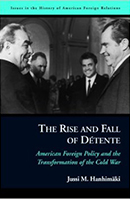
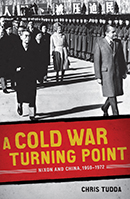



In a time where racial equality had just begun to be implemented, there was much social unrest between whites and blacks, especially when dealing with education. The busing system was designed as a means for black and white children to go to school together and breaks the barriers that existed within the American population. By integrating schools and communities, the American government intended to create a new future that did not involve racial conflict. However, suddenly creating a new society would not come easily. The goals that busing intended for would mean suddenly dropping the feelings whites had for blacks and the feelings blacks had for whites, and that is not something that happens overnight. The Burden of Busing: The Politics of Desegregation in Nashville, Tennessee by Richard A. Pride shows the degree of success in “the city that best represents the ordeal of busing.”1
The book first focuses on the race politics and the racial segregation that existed and how integration was to be implemented. Originally, we see a disagreement within the people over the busing system. In a poll, we see that both white and black parents thought “the policy had hurt the educational development of both black and white students.”2 A topic of interest lies largely in the race politics between not only blacks and whites, but also among blacks. One example of this lies in the press for action from Booker T. Washington and W.E.B. DuBois, another in how blacks were supposed to assimilate with whites in a society where both parties grew up with the thought of white superiority. Both of those examples come together to show that, not only is there disunity in the movement towards black power and equality, the incoming change would be going against the status quo of the time. Segregation could not be left alone if the busing system was to work, so great efforts were made to integrate and desegregate communities where busing was to be enforced. In the face of sayings such as, “whites make their own history,” civil rights acts were passed and efforts for school integration were made, to little avail.3 Under the social conditions, integration was an utter failure. Nashville was known as a town to keep a cool head in the heat of the moment, but the Martin Luther King assassination brought violence in the midst of a nonviolence movement. From the consequences of the actions, it appeared that a successful change in racial equality was not in sight.
Secondly, we see the direct responses from the people and students as a result of busing. The overall mood towards this change can be defined by a quote from L. Clure Morton, the man who came to reside as the general judge when it came to the matter of busing in Nashville, when he said, “not every school had to meet the standard, but we must be conscious of the composition within them.”4 Normally, a big change to the face of American society is enforced on a large scale to ensure the message gets across to the people; however, we see from the success, or lack thereof, that hard enforcement will only be detrimental towards desegregation. Changes in students’ academic achievement were one of the sources of criticism against the busing system. Any sort of “failure to raise grades was accredited to busing” without a second thought.5 Findings had shown that busing brought a variety of changes, including: having students change schools was affecting grades, children in non-court-ordered areas did improve more educationally than those in court-ordered areas, the ratio of black students to white, surprising yet not, negatively affected improvement, and social class played a significant role in the likelihood of white children raising their grades. Another of the most difficult issues came from what was known as white flight. As a result of being forced to associate and interact with blacks, white families decided not to participate in the busing plan by simply removing their children from the school and either moving to another school or to an entirely new district where busing was not implemented. This phenomenon happened so frequently that researchers were able to deduce what conditions would drive parents to take their children elsewhere.
The following refers to the different attitudes that different groups of people had to light and the busing system’s direct effect on students. The public attitude towards busing was one of disbelief, although generally, the benefit of desegregation outweighed the cost of busing. The general public was unconfident in the teachings from public schools and the people considered the elite sent their children to private schools, a source of reassurance to parents who could afford it from the diminished view of public schools as a result of busing. Parents generally saw the school system in a better light than the public, but nonetheless, there was skepticism for busing and the quality of schools. A majority of the teachers, being a reliable first-hand source of information since they are directly involved with the educational development of the children, claimed that both black and white students were suffering in their studies as a result of busing. Although busing was intended to show equality through black and white students going to school together, enforcement of the system was largely felt by the black population. Black parents claimed that, if any troubles or difficulties were had, white children were the last people to feel its consequences, while black children had to bear the brunt of it. DeLois Wilkinson, a school board member taking part in the Nashville desegregation plan, was astounded at a new preposition and mentioned how the school board “is talking about experimenting with blacks like people experiment with animals.”6
We see the overall conclusion to the effort put into the busing system meant to integrate white students with colored students in the remaining. The plan, though largely passed, had trouble as people filed complaints against it; it was later discovered that those people were of black color. All complaints ran that blacks were being treated unjustly, and that “black heritage was seen as a joke.”7 The plaintiff’s argument was blacks did not have to move to white areas, it could work the other way around; blacks were always seen as inferior through the aspects of the plan, regardless of how much the integration was supposed to create equality. The Court decided to take the complaints into consideration, creating a new plan under an assimilationist idea with a system trying to create the least amount of conflict possible between the whites and blacks. This concept, once set in place, would be left to grow on its own. Ray Osborne, the man responsible for monitoring the racial balance of the schools mentioned in the essay, describes the decision like the tail of a dog, saying how, in the past the plan was “the tail that wags for the dog. Now, we will let the dog wag the tail.”8 Despite the effort towards sympathy, the plan came to a crashing halt as miscommunication of the system and the departure of a board member led to the Circuit Court offering no new legal issues, and consequently, the Supreme Court ruling against the system on the claim that the basic question were left not ruled upon.
Throughout the book, the idea that busing was something alien to the people and hard to understand and implement is persistent. “Kind of a culture shock,” parents originally went to further measures in an attempt to stay out of reach of the new busing system for the sake of their children.9 Busing accommodations, in the time that this book was written, did not receive backlash simply because it was a foreign concept, but because of the new notion that blacks should be considered not inferior, or even equal, to whites. Busing was part of a system that was intended to break apart the old order that functioned with blacks at the bottom of the social pyramid. Despite the roller coaster of successes and failures, busing still left behind its legacy of contributing to the black power and civil rights movement. Although its overall direct effects would imply otherwise, the means by which it served as exposure of the conflict that existed between whites and blacks to general public and the specific events where black children and white children found educational success with the integration system are events that Pride brings forth in attempts to put busing under a more positive light than before.
Richard A. Pride comes from a history of history. Although he wrote a small number of books, they all involved digging up information of the past in attempts to give a full view of the argument. From his two writings on black desegregation, through school and racial narratives, we see that Pride supported racial equality. This also explains why, through all the work put into reading about busing, the fact that busing was a general failure is so diminished further than what it is in actuality. He mentions how race politics only works when, “inequalities between races are accepted as legitimate and temporary,” showing his belief that racial inequality will exist as long as either side is stubborn.10 Although he wishes for equality, his education and family life developed an understanding of human nature within Pride as he acknowledges that, “neither blacks nor whites wanted assimilation, unless it was on their own terms.”11
Written in 1985, many years after the busing incidents in Nashville, this book is able to look at both races without exhibiting preference towards one side or another. Efforts made as early as 1980 by both sides to make schools racially integrated, as seen when stated by Pride that “both blacks and whites came increasingly to fight for racially homogeneous schools.”12 As the commotion subsided over the controversy of busing and compromises made to benefit everyone, the book has a lighter tone throughout its presentation of information, even moments that one would assume to negative connotations. Based on the reactions of the people mentioned within the book, busing and its results were only met with initial opposition. At first, only blacks who had no prior access to the better school system appreciated the busing system for the upgrade it brought to their children, but all other groups, including whites and the few blacks who were already accepted into these schools, opposed the integration system. Despite these original feelings, we see that those feelings grew to be more open to the idea of busing, contrary to the conservative attitude of the time towards blacks and their integration into society.
The two reviewers, Dworkin and Combs, both praise the work in general and its exposure of the direct effect busing had on children. Dworkin points out the dilemma behind busing, as it pointed out the deeper meaning that Pride did not explicitly say, as race-minority parents and certain race-majority parents lost their part of control in the neighborhood ethnic community. One particular point from both reviews is how Pride used busing and its troubles between status politics and class politics, just like how Booker T. Washington and W. E. B. DuBois struggled against each other; additionally adding how it applies to the modern day because it is that clash in politics, “over which modern writers in race relations argue.”13 Despite the praise for the work, Combs believes that bias clouds the representation of the information, giving an incomplete telling of the events. For example, when stating about the status politics as a struggle over symbols, Combs believes the “perceptions may or may not be based upon empirical evidence.” 14 Both reviewers mention the success of the work as a whole, but, like under the entire umbrella of history, partiality is always present since history is written from the eyes of the victor.
The book was an eye opening read, especially upon realizing that busing is not what I originally thought it to be. Busing was “the process of distributing colored and white children between schools to integrate society,” and has nothing to do with Montgomery, Rosa Parks, and boycotting buses.15 It created an understanding for the racial situation of the time. Even though the conflict between whites and blacks is always taught in school, this work taught that children were not an exception to the consequences of segregation. Focusing on the various efforts to make busing work, such as the initial implementation of the system, and the respective reactions, such as white flight, come together to show the fight that took place to attain the ultimate success in 1983, past the timeline of the book, of a nation-wide system of desegregation. With knowledge of preexisting social standards and segregation, a large surprise comes from the amount of cooperation and/or the lack of mentioning it. Although the book is primarily meant to center around the busing system and the interaction between African Americans and whites in the attempt for equality, it presents little incorporation with outside knowledge. This makes it both a good and bad primary historical source. Because of its straightforward approach to keeping all topics of the book within material that was directly presented from the author, it could be considered as a reliable source. However, it could be considered as a less favorable source because it does not venture out past the school environment to explore the complexity of the matter.
Price stays within his topic when writing his book, to the point where, if one did not know outside history, they would not think the 1970s were a time of crisis. The form of crisis Price explains in the book is the growing disposition between blacks and whites and how busing would either be the catalyst for chaos or the saving solution. By explaining busing from its origins, Price portrays the busing conflict as something that did not find success in 1960s and the 1970s was the time period where it would. As the decade changed from the 60s to the 70s, attitudes did not and Price portrays this through: graphs showing the unchanging number of people moving out of neighborhoods across multiple years, evidence of white and black conflict from both decades, and more. With the example of white flight starting “as early as 1961,” proving that busing was not the lone cause of the flying phenomenon, we see the fight for breaking down past social standards of white superiority spans the time of multiple decades, including the 1960s and 1970s.16 By tying together events from the later years of the 60s to the early 70s, Price creates a continuous flow from decade to decade, showing both how change was slow but did occur as time progressed through the years.
Busing itself was meant to bring out the full potential of the students in the system, as long as the community where it was enforced gave its full support. Originally seeing the situation as a choice between two unfavorable options, the people later realized there was no simple solution for the problem, that they “could resign themselves to their fates or work to bring their children to full potential.”17 Life is not always the easiest of tasks to find success in, and sadly, the fight for equality and school integration failed in the past, but past’s future seen today proves that it was not a failure but a stepping stone to a grand, final success.
Footnotes:
1. Price, Richard. The Burden of Busing. Knoxville: The University of Tennessee Press, 1985. 278.
2. Price, Richard. 9
3. Price, Richard. 46
4. Price, Richard. 70
5. Price, Richard. 109
6. Price, Richard. 189
7. Price, Richard. 225
8. Price, Richard. 284
9. Price, Richard. 3
10. Price, Richard. 283
11. Price, Richard. 283
12. Price, Richard. 282
13. Dworkin, Anthony Gary, and H. Malcolm MacDonald. “The Burden Of Busing: The Politics Of Desegregation In Nashville, Tennessee.” Social Science Quarterly (University Of Texas Press) 67.4 (1986): 900-901. Academic Search Complete. Web. 30 May 2015.
14. Combs, Michael W. “The Journal of Politics.” JSTOR. The University of Chicago Press, 1 Feb. 1987. Web. 30 May 2015.
15. Price, Richard. 2
16. Price, Richard. 80
17. Price, Richard. 285
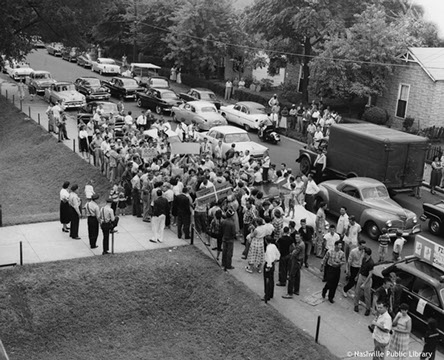
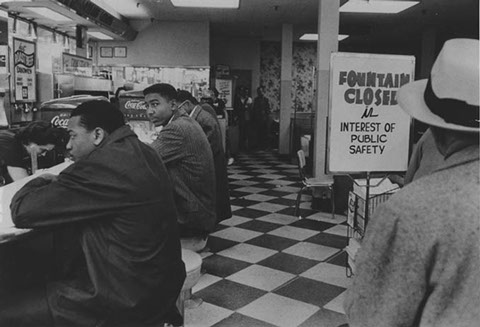

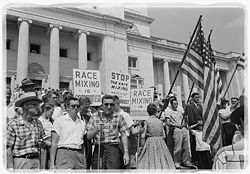
1 - 4
<
>